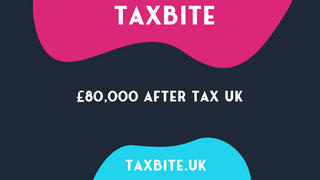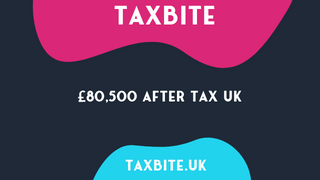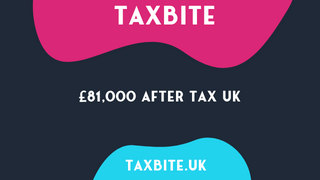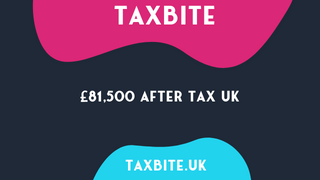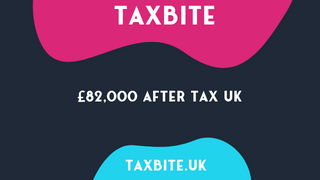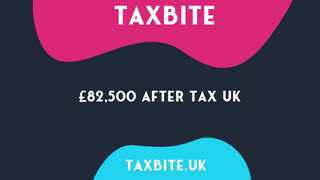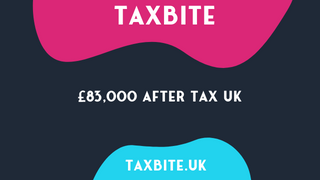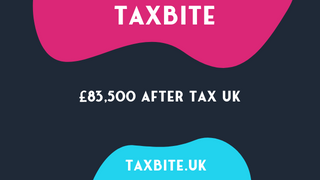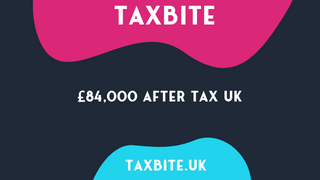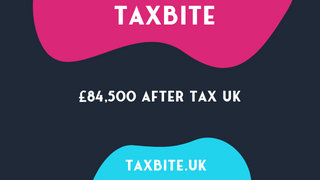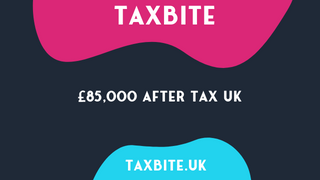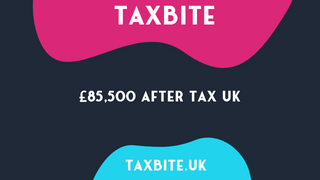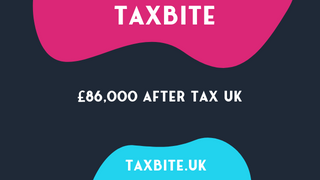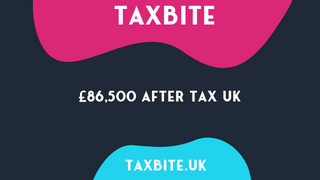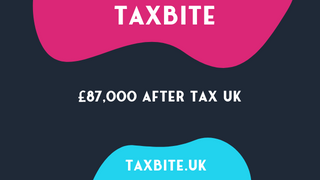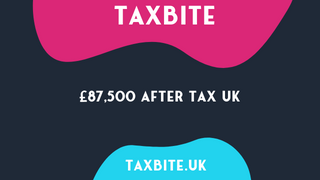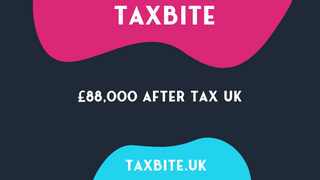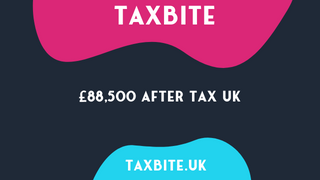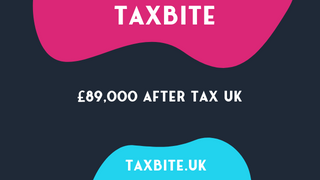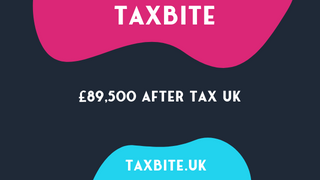Are you curious to know what your take-home pay would be on an £86,000 salary in 2023? In this section, we’ll explore the key factors that affect your earnings when you’re a high earner. We’ll clarify the difference between gross income and taxable income, and explain how the marginal tax rate and basic tax rate apply to your situation as a high earner. Furthermore, we’ll examine how National Insurance Contributions, deductions for pension and childcare, bonuses, and other income impact your take-home pay.
It’s time to calculate gross income. This includes all forms of income, such as salaries, bonuses and benefits. Then subtract any personal allowances and deductible expenses to figure out taxable income. That will determine the amount of tax to pay.
Make a table with columns for each category. Then, identify the relevant tax bracket and apply the correct tax rates. Besides the standard deduction by HMRC, check if you’re eligible for other deductions, such as pensions and childcare. Tax-saving methods like childcare vouchers or workplace schemes may offer more allowances.
Net salary can be tricky to calculate – especially when different categories of earnings or bonus payouts come into play. Use online calculators to get accurate calculations of taxes and deductions.
Understanding gross income and how to calculate taxable income is key to managing finances and avoiding unnecessary taxes.
To understand tax rates is important for working out your take-home pay. Two factors to bear in mind when calculating income tax are the marginal and basic rate. The marginal rate is the tax you pay when you earn more than a certain amount. The basic rate applies to all earnings under this threshold.
An example to illustrate this with an £86,000 salary is to make a table of taxable income and relevant tax bands. In England and NI, the 20% basic rate applies to earnings up to £37,700. Between £37,701 – £150,000, it’s 40% marginal tax.
Bear in mind that tax rates vary in the UK. In Scotland, the starter rate is 19% for earnings over £12,570. This then goes up with the amount you earn.
Knowing your marginal and basic tax rates can help you budget. You can work out how much money you’ll have left after paying taxes. You can also plan for things like putting spending into lower-rate years for savings.
You also need to think about National Insurance when budgeting.
Calculating National Insurance Contributions is essential for understanding take-home pay in the UK. Both employers and employees must contribute. It depends on salary, age, and employment status.
For the 2023/2024 tax year, Class 1 employees earning between £732 and £4,167 per month must pay 12% of their earnings. Any income above this threshold has an extra 2% contribution to National Insurance. Employers also contribute 13.8% of their employee’s earnings over £170 per week.
Certain people are exempt from paying National Insurance Contributions. For example, those who are over state pension age and earning below the Lower Earnings Limit of £120 per week. Knowing National Insurance Contributions and how they are calculated helps people understand their take-home pay.
Maximizing take-home pay? Pension and childcare deductions can help. If you earn an £86,000 salary, picking the right plan is vital for your net income.
Pension schemes are tax-free, reducing your taxable income and lowering tax payments. Your employer may match your contributions or pay for them.
Working parents with children under 12 can get childcare vouchers or a tax-free childcare account. They avoid taxes on those earnings.
But, if you earn over £150,000 a year, higher (45%) rate relief on pensions has been reduced since April 2016. And, if your employer offers childcare directly or a workplace nursery scheme, it won’t be tax-free.
Retirees may be entitled to higher personal allowances, but pension contributions don’t increase take-home pay apart from personal allowance adjustments.
Pension and childcare investments remain a great way to save net income across different industries.
Simulate different combinations of figures using online calculators or the HMRC Pension calculator to find the best plan for you.
Exploring Your Take-Home Pay on an £86,000 Salary
Understanding taxation is key to knowing your take-home pay when you earn £86,000. Bonuses are subject to tax and NI. Employers may make deductions from your bonuses, like student loan payments or pension contributions. Other earnings must be declared on a Self Assessment Tax Return. Reporting correctly is vital, as higher taxes may result. Therefore, seek advice before getting extra income.
Maximize your take-home pay with salary sacrifice options like childcare vouchers or a cycle-to-work scheme. These reduce your taxable salary and increase disposable income. Deductions can reduce the cash you earn – but with planning and understanding taxation, you can make the most of your salary.
Your salary may start with a generous amount, but as it undergoes taxation, it can feel like you’re getting peanuts. In this section, we’ll take a closer look at what comprises your after-tax salary. We’ll cover everything from the deductions that reduce your income to the different tax brackets that determine how much you owe. Along the way, we’ll also discuss childcare vouchers and other allowances that can assist in keeping more money in your pocket. So buckle up and let’s dive in!
When it comes to your take-home pay, it’s important to know the deductions. These are expenses and contributions taken out of your gross income.
We’ve created a table to give clarity:
| Deductions | Description |
|---|---|
| Tax | Income tax based on your taxable income. |
| National Insurance | Mandatory contribution towards healthcare, benefits, and pensions. |
| Pension Contributions | Payments for a pension scheme. Optional or mandatory. |
| Childcare | Financial assistance for childcare. Optional or mandatory. |
Taxes and National Insurance are mandatory. Pension contributions and childcare payments may vary. It’s important to know how they impact your net pay. For example, someone with an £86,000 salary will have a higher tax bill than someone earning £40,000. Opting into a pension scheme can lower your tax bill.
To maximize your take-home pay, plan for taxes and other expenses. Careful planning can benefit your financial well-being.
It’s super important to understand taxable income and tax bands to ensure you’re paying the right amount of tax. Taxable income includes specific expenses and deductions. Tax bands have different tax rates based on income brackets. Knowing the tax rates for each bracket is essential to get the most out of your salary.
For example, in England, if you make £86,000 a year, 20% will be charged on income up to £50,270 and 40% on income between £50,271 and £150,000.
Also, NICs, student loan repayments and pension contributions can reduce net pay. NIC payments vary depending on gross earnings. So, it’s important to consider the impact of these deductions on your budget.
To sum up, understanding taxable income and tax bands helps you to plan and optimize your finances. It also helps you pay the right amount of tax, NICs and other deductions.
Maximising your financial situation? Start by taking advantage of benefits like Childcare Vouchers and Other Allowances. These vouchers can save you Income Tax and National Insurance contributions if you opt to save via salary sacrifice. Employers also benefit from this scheme as they save on their own National Insurance contributions. The government’s Tax-Free Childcare Scheme allows families to receive up to £2,000 per child (per year) under the age of twelve.
Extra Mile Award schemes can foster a culture of innovation through non-financial incentives such as paid days off or other bonuses. Workplace Parking and Cycling Schemes can save money on commuting expenses and reduce carbon footprint. Car allowance is tax-free and can go up to £6,000 annually.
Employers offer further allowances such as healthcare and dental insurance, gym memberships, phone contracts, travel discounts, and more. These benefits boost employee morale and provide financial security.
Remember, your situation will vary depending on income brackets, family size, applicable taxes, and benefits packages. Being aware of all available financial benefits is essential for optimal financial planning. Consider regional differences in taxation across the UK to get the most out of your situation.
Are you curious about the net income of UK residents in different regions? Let’s take a look at the taxation policies in England, Wales, Scotland, and Northern Ireland, and see how they affect residents’ net income. We’ll also explore the regional differences in net income and the impact of deductions on this figure.
According to recent projections, it is estimated that the average net income for UK residents in 2023 will be £23,100 after tax. So, let’s dive into the details and examine how tax policies and regional factors impact this number.
A table can be made to understand the tax variations across UK regions. The table shows the Personal Allowance, Basic Rate Limit, and Higher Rate Threshold for each region. For example:
| Region | Personal Allowance | Basic Rate Limit | Higher Rate Threshold |
|---|---|---|---|
| England & NI | £12,570 | £37,700 | £50,270 |
| Wales | £12,570 | £37,700 | £50,270 |
| Scotland | £12,570 | £43,430 | £150,000 |
| Northern Ireland | £12,570 | £37,700 | £50,270 |
It’s worth noting that all UK taxpayers have to pay a flat rate of 12% National Insurance Contributions on their income above the Primary Threshold (£9,568) up until the Upper Earnings Limit (£50,268). This applies across all regions, even though tax laws vary. Long-term care/domiciliary care charges and business-related expenses claims may also have different rules in different regions. Knowing the differences in tax rates, allowances, and thresholds is important for proper financial planning.
To sum up, taxation rules in England, Wales, Scotland, and Northern Ireland all differ. So, whether you’re in London or Northern Ireland, it’s wise to educate yourself on your region’s tax laws to avoid shocks come tax season.
Net income in the UK changes from region to region. England, Wales, Scotland and Northern Ireland each have different tax bands that influence the amount of cash you get after taxes.
For example, if you earn £27,399 – £43,430 in Scotland you have to pay 20% basic rate tax. The same goes for people in England.
Let’s analyze a table to get a better understanding:
| Country | Gross Income | Taxable Income | Net Pay |
|---|---|---|---|
| England | £86,000 | £65,750 | £55,449 |
| Scotland | £86,000 | £63,500 | £53,921 |
| Wales | £86,000 | £65,750 | £55,011 |
| Northern Ireland | £86,000 | £66,350 | £55,187 |
It shows that Northern Ireland residents receive the highest net income, followed by England. In Scotland, net pay is slightly lower.
Tax differences mean varying net income depending on where you live. When deciding where to live or work, consider taxes and deductions. Think about how deductions will affect your net income, e.g. childcare or holidays.
Deductions
Deductions have a big effect on net income. It’s important to know how they affect your take-home pay. Pension contributions, taxes and childcare vouchers are all types of deductions to consider.
When working out net income, all deductions must be factored in. You must know taxable income and tax bands. Tax rates differ depending on where you live in the UK. So, you need to know which taxes apply to you.
Childcare vouchers can be used to pre-pay for childcare with pre-tax pounds. This helps reduce taxable income and increases take-home pay. Personal and marriage allowances can also reduce tax obligations.
It’s essential to consider how deductions impact net income in the long-term. Pension contributions may seem like an added cost now, but will benefit you in the future by helping you to save for retirement. On the other hand, not managing student loan repayments correctly can lead to a large reduction in your net wage.
Overall, understanding all deductions and planning your expenses will help you make the most of your earnings and pay less tax. Don’t miss out on potential deductions such as pension plans or childcare vouchers. It’s hard to pay less tax – it’s like trying to catch a greased pig – and you could end up with nothing.
If you’re a UK taxpayer, it is important to keep an eye on the tax rates and allowances set for the next tax year to ensure you are paying the correct amount of tax. In this section, we will discuss everything you need to know regarding tax rates for the 2022/2023 tax year. We will explore the upcoming changes in tax rates and allowances and analyze the potential impact of inflation on tax rates so that you can plan ahead and avoid any surprises.
Tax rates and allowances are ever-changing. It’s important to stay up to date for the new tax year. The government announces changes during the budget speech in March, taking effect from April 6th. For 2023/2024, there’ll be changes in the personal allowance, basic rate band, and higher-rate threshold.
The personal allowance is going up by £2,000 to £14,570. This gives low-income earners the chance to earn more before entering a higher tax bracket. However, the basic rate band is reducing by £2,000 from £37,700 to £35,700 in the previous year. But, the higher-rate threshold is increasing by £1,500 to £100,000. Therefore, high-income earners will have lower tax bills.
It’s essential to check with HMRC or an accountant before the tax year. This will help you to be aware of any changes that could affect your income and net pay. Inflation affects take-home pay, but not tax collection. Keeping track of alterations in tax rates and allowances is key to making the most of your take-home pay.
Inflation’s impact on tax rates can’t be overlooked. It reduces the buying power of wage earners, and affects their standard of living. In the UK, the government changes tax brackets and allowances every year to keep up with inflation. This adjusts how much income is taxed, to make it fair.
But, inflation can mean taxpayers with no earnings change, still move into higher tax brackets. This can cause more tax to be paid, negatively impacting finances. Also, inflation alters the value of taxes credits and deductions available. E.g. deductions that aren’t adjusted for inflation may not lower an individual’s taxable income enough.
The British government adjusts personal allowances levels each year, to try and keep up with inflation. But, this might not factor in rising prices or changes in expenses. Resulting in people paying more, even if their real income is same or less. It is important to keep track of annual tax changes, and know how they affect your pay.
You can use an online calculator, to make sure you are not paying too much in tax. This tool considers all factors, including inflation, when calculating your taxes and wages. This lets you check how much you should be paying, so you can take steps to reduce taxes.
Are you tired of manually calculating your taxes and net pay? Look no further than online tax calculators! In this section, we will explore the benefits of using these handy tools, provide a step-by-step guide to using a tax calculator, and highlight the important factors you should consider when using one. Online tax calculators are convenient and can help you achieve your financial goals by accurately determining your tax and net pay. For example, if your goal is to achieve an after-tax income of £86,000 in 2023, these tools can provide accurate information to help you reach that goal.
Online tax calculators offer lots of advantages! Input your details, and you’ll know your after-tax salary.
These tools save time – calculations are done automatically. They’re user-friendly, and even those with little financial knowledge can use them. All the info regarding taxes, pensions and student loans is accessible.
Plus, they show deductions you may have missed, like childcare vouchers. And they’re updated with the latest tax rates and allowances from HMRC.
In short, online tax calculators are essential for understanding your net pay and deductions accurately and quickly!
Need to calculate taxes? We’ve got you covered! Our article offers a useful, step-by-step guide to make using a tax calculator simple and easy.
Tax calculators can be helpful, but they’re not perfect. If you have complex financial arrangements or aren’t sure about something, talk to a financial advisor or accountant.
In summary, an online tax calculator is a great way to figure out your take-home pay after taxes and deductions. With our guide and this technology, you can reduce stress and confusion when calculating taxes.
When using a tax calculator, there are key points to keep in mind. Firstly, have all needed info, such as income sources, allowances, and deductions. Then, check the type and accuracy of the calculator. Also, stay aware of the latest tax rules and regulations from reliable sources. Furthermore, keep backup documents of returns. Don’t forget that online calculators are just guidance tools – don’t base decisions only on them.
Get ready to discover the actual cost of your salary with this complete breakdown of taxes and net wage. We will closely examine how your earnings change each month and year due to taxes, spanning various time periods. Furthermore, we will delve into how important contributions like pension and student loan payments can impact your net pay. Are you eager to find out how much you will actually take home in 2023 after taxes? Keep reading to get all the figures.
It’s vital to grasp the monthly taxes paid and net salary. Examining deductions taken from gross pay, including taxes, national insurance contributions, pension, childcare deductions, bonus payments, and other earnings is vital. To show this breakdown, a table can be made. It should include columns for: gross income, taxable income, basic tax paid, higher tax paid, national insurance contributions, pension contributions, childcare vouchers, bonus payments, and net pay.
For example, if you’re referring to the tax year 2023/2024 in England, the breakdown looks like this:
| Gross Income | Taxable Income | Basic Tax Paid | Higher Tax Paid | National Insurance | Pension Contribution | Childcare Allowance | Bonus Payment | Net Pay |
|---|---|---|---|---|---|---|---|---|
| £7,166.67 | £5,583.33 | £1,116.67 | £2,183 | £428.78 | £175 | £243 | £1426 | £4.74 |
It’s important to keep in mind that changes in income or deductions throughout the year can massively affect monthly take-home pay. Plus, regional differences in taxation and net income have an effect on take-home pay calculations. To sum up, having a precise understanding of monthly tax breakdowns lets people intelligently plan their expenses and make the most of their take-home pay every month.
Yearly breakdowns of taxes paid and net wages are critical for analyzing an individual’s tax payments and income. It includes taxable income, tax bands, national insurance contributions, pension contributions, childcare vouchers and more.
| Taxable Income | Tax Bands | National Insurance Contributions | Pension Contributions | Childcare Vouchers | |
|---|---|---|---|---|---|
| Net Wages |
tags can help illustrate this breakdown and provide columns for various deductions that affect net pay.
It is important to note that deductions, like pensions or student loan repayments, can significantly reduce net pay. The yearly breakdown is a must-have to understand monthly payrolls’ impact on annual earnings. Plus, changes to tax rates and allowances in the 2023/2024 tax year can majorly affect tax payments – making it essential to calculate the deductible amount accurately.
Despite this, research shows that only half of eligible people use online tax calculators to find their take-home pay. Utilizing reliable online resources can help individuals accurately determine payable taxes and take advantage of deductions.
Pension contributions and student loan payments have a big effect on someone’s net wage. These deductions are taken before tax and NI contributions, so they lower the taxable income and this reduces the net wage. To illustrate this, we made a table.
For instance: someone earns £86,000 yearly and they give 10% to their pension and pay back a student loan at 9%.
| Amount | Calculation | |
|---|---|---|
| Gross Income | £86,000.00 | |
| Pension | -£8,600.00 | 10% x gross income |
| Taxable Income | £77,400.00 | Gross income minus pension contribution |
| Student Loan | -£7,740.00 | 9% x (taxable income above £27,295) |
| Income Tax | -£22,354.40 | (29% tax rate on taxable income over £50k) plus (20% on income between £12.5k and £50k) |
| National Insurance Contributions | -£5,357.64 | (13.8% NI on earnings above £9,568 threshold) plus (2% on any earnings above £9,568 threshold) |
| Net Wage | £33,378.56 |
Remember: pension contributions can actually increase net pay. This is because they decrease taxable income, which reduces overall tax bills and this boosts the net wage. Making regular pension contributions is a good way to make your money go further and get more from take-home pay. Also, repaying student loans early can lower future interest payments and this will give you a higher net pay. It’s important to know how each deduction affects your net wage and adjust accordingly for the best results.
By making slight adjustments to your income, such as adding student loan or pension contributions, you can maximize your take-home pay and meet your financial goals. In this segment, we’ll explore how adjusting your income affects your taxes and net pay, the benefits of adding pension contributions, and how student loan repayments impact your net pay. By staying tuned, you can learn how even small changes can have a big impact on your finances.
Adjusting income can have a huge effect on tax and net wage. By shifting into a different tax bracket, people can notice a rise or drop in the amount of tax they must pay. Furthermore, contributing to a pension scheme or making student loan payments can also affect net wage.
To comprehend how adjusting income impacts tax and net wage, the table below outlines the changes that may occur based on different income levels. It covers the basic rate of 20%, higher rate of 40%, additional rate of 45%, and national insurance contributions for residents in England, Wales, Scotland, and Northern Ireland for the 2023/2024 tax year.
| Income Level | Tax Paid | Net Wage |
| £50,000 | £10,000 | £40,000 |
| £75,000 | £22,500 | £52,500 |
| £100,000 | £37,500 | £62,500 |
It’s important to note that investing in pension schemes or making student loan payments can have advantageous effects on net wage. Pension contributions can reduce the amount of tax owed while also expanding savings for retirement. On the contrary, student loan repayments are taken out before tax is assessed, so they don’t affect taxable income. By making extra payments on student loans, individuals can decrease the overall balance owed, maybe even erasing it sooner and raising disposable income.
In short, adjusting income levels can have monumental effects on both tax and net wage, and it’s wise to consider the aftermath before making any changes.
Adding pension contributions is wise. It comes with lots of benefits. Your taxable income reduces. This means your tax bill decreases. Your financial future is secured too. This is because you create a retirement fund.
One great advantage of adding pension contributions is that it lowers taxable income. Contributions are made before tax is taken from income. So, regular payments into the pension scheme reduce income subject to tax.
Pensions are a great way to save for retirement. Contributing part of salary ensures future financial security. Plus, government incentives are often available. The UK has set up various programmes to encourage saving for retirement.
Adding pension contributions may qualify people for other benefits or Tax credits. Lower taxable income can mean access to child benefit or working and child tax credit, which may be reduced if earnings are too high. Plus, employer contributions may increase over time.
Adding Pension Contributions is important for financial security. It’s key to understand deductions and investments and how they affect net pay and take-home pay. Pension planning must take inflation and other market forces into account so that it remains relevant. This way, enough money is available in the decades ahead.
Repaying your student loan is important. The repayments depend on you earning more than the repayment threshold. This is then taken from your gross salary before taxes. If you earn enough, you can pay off your loan faster.
Student loans come in two forms. Plan 1 is for courses before September 2012, while Plan 2 is for those after. Plan 1 has a repayment threshold of £18,330 a year. Plan 2 starts with £25,725 a year. Plan 2 has more interest, at RPI plus 3%.
You can make salary sacrifice schemes. Your employer might offer this. You exchange some of your salary for benefits such as pensions or extra leave. This lowers your taxable income, and affects your net pay. So, understand the tax implications before deciding.
Maximizing your take-home pay is key. Plan for deductions and use these tips. That way, you can make the most of your money.
If you’re like most people, you want to make the most of your take-home pay. It is important to have a plan for managing your finances. Tax rates are subject to change, therefore planning for tax and deductions is crucial. In this conclusion, we’ll explore tips for maximizing your take-home pay, the importance of planning for taxes and deductions, and offer some final thoughts on how you can keep more of your hard-earned money in your pocket.
Maximizing take-home pay is major for anyone in the UK. To get the best net income after taxes, deductions, and contributions, one should maintain a steady pay structure and use tax allowances and benefit schemes. Here are five techniques for boosting your take-home pay:
It’s important to plan finances long-term and be aware of taxation laws that could affect your take-home pay. Keeping consistent payments can provide current benefits and guard against sudden costs from changes in net pay. By following these tips and being up-to-date with regulations, you can significantly raise your take-home pay and live well in the UK, wherever you live. Planning ahead for taxes and deductions can save you from being financially burdened by the taxman.
Maximizing take-home pay requires careful planning of taxes and deductions. Knowing breakdowns of deductions, taxable income, and tax bands helps avoid unexpected bills and ensures no extra tax is paid. Childcare vouchers and pension contributions help reduce taxable income and increase take-home pay.
Reference data and guides online help individuals calculate taxes and net pay accurately. This lets them plan for retirement by adding pension contributions, which decreases taxable income and grows savings.
Tax rules and regulations differ in Scotland and Northern Ireland, so it is important to consider regional differences when planning taxes and deductions.
In conclusion, careful planning of taxes and deductions is essential for individuals to maximize take-home pay and save for the future. Tax reliefs and calculators help plan for financial security and manage finances.
Maximizing take-home pay is essential. Plan finances considering all deductions and taxes. Understand rates, contributions in different parts of UK. Get the most of net income with allowances, such as childcare vouchers.
Planning for tax and deductions can be complex. However, online tax calculators make it easier. Input salary, additions to get approximate net wage. Plan better with this helpful tool.
According to various sources, the take-home salary for an £86,000 income after tax and deductions can range from £57,654.10 to £58,930 annually, which breaks down to £4,804.60 to £4,911 per month.
The salary after tax for an £86,000 income in the UK is composed of income tax and national insurance. The deduction for pension contributions and childcare vouchers may also apply depending on the individual’s situation.
The tax rate for an £86,000 income in the UK ranges from 32.5% to 40%, based on different sources. The marginal tax rate for an £86,000 income is 43.3%, meaning any additional income will be taxed at this rate.
The tax calculated for an £86,000 income in the UK is based on the individual’s taxable income. The first £12,570 of earnings is tax-free because it is the personal allowance. The portion of earnings between £12,570 and £50,270 is taxed at the basic tax rate of 20%. The portion of earnings between £50,271 and £150,000 is taxed at a higher rate of 40%. Any earnings above £150,000 are taxed at an additional rate of 45%.
Yes, pension deductions and childcare vouchers can affect the net income of an £86,000 salary. Such deductions reduce the taxable income, which ultimately affects the amount of tax paid and the net income received.
Based on sources, a £1,000 bonus can generate an additional net income of £568, while a £5,000 bonus can generate an additional net income of £2,838 for an £86,000 salary.
Here’s a list of similar salaries:
